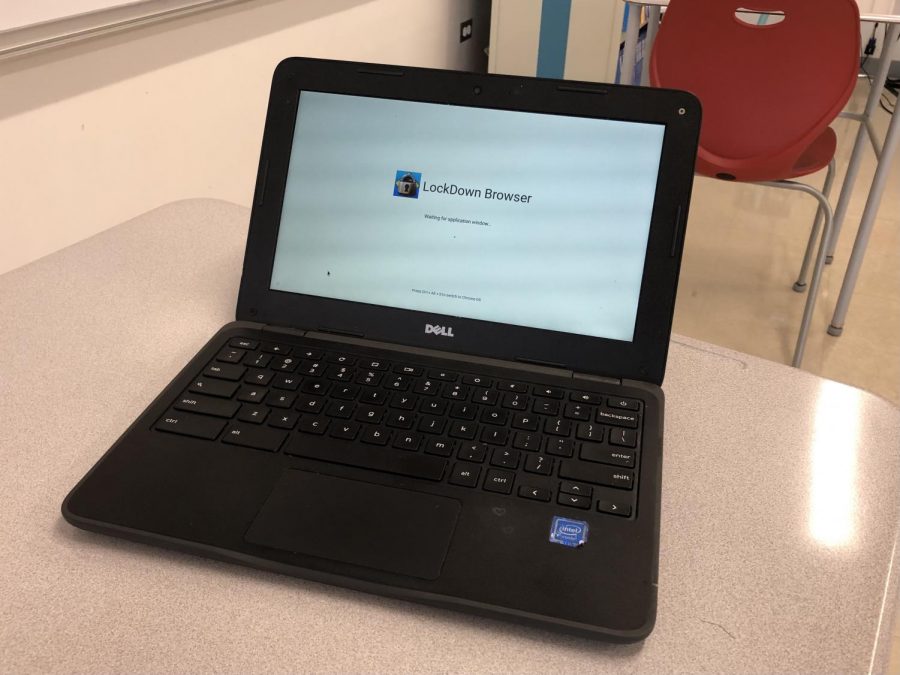Testing in the Age of Virtual Learning
April 15, 2021
Let me be clear: cheating in all its forms is unethical. The use of additional resources which are clearly not meant to be used to defy the explicit directions of your teacher for your own advantage is wrong. There has, however, been a significant uptick in the prevalence of cheating as a result of the new virtual testing environment. The only reason to bring attention to these trends brought forth by a new situation is to analyze the deeper conclusions that can be drawn about the educational system as a whole.
There is an important difference between these two forms of eLearning malpractice: in one category, students have been inspired to use their ever increasing quantity of resources and prove their understanding of their curriculum in original and inventive ways. On the other hand, students who use their knowledge of both technology and of their teachers’ lack of understanding to either interfere with or avoid the proceedings of a class period act only with malignant intent. The recognition of the difference between the two and this understanding of the former begs a new question: Are students learning to cheat, or cheating to learn? In a modern reality where every kid has access to their computer or device 24/7, is it truly a bad thing to learn how to get a quick answer to a question in seconds. For the past couple years education has been adjusting to incorporate the advantages of technology; one of them being the seemingly limitless amount of information at every student’s fingertips.
Students this year are able to cheat more than ever due to the virtual testing format and the characteristics of our learning environment in general. With only a single front facing, low-quality camera and no audio surveillance of students during exams, many kids have gotten “creative” in their strategies for improving their test performance. One student, caught only because they forgot to mute themselves for a test, called out to their phone with the “Hey, Siri” function to ask for some help on a question. Other students take simpler approaches such as taping notes just behind their camera or even having someone in the room with them feeding them answers from beyond the scope of their webcam.
Other than cheating there are many ways unscrupulous test takers can use a virtual format to their advantage. The obvious divide between a high school student and an experienced teacher’s ability to learn the ins and outs of Zoom rapidly creates opportunities for students. Simply claiming to have a “bad connection” or “Zoom problems” is occasionally all it takes to get a student out of an exam. Teachers have no way of verifying or solving such alleged tech problems quickly and the response is often to “email tech”. The less technologically inclined teachers can easily be pulled into a sort of dance with mischievous students who can kill half a class period by drawing a teacher into helping them solve a fake problem.
This new and unusual virtual Zoom setting in which school has been conducted may have acted as a catalyst for a trend that has been slowly appearing in high school curricula. Teachers have been moving away from the traditional memorization style of learning and towards something new. The division falls between those who believe in a style where a student might be required to list every historical document which relates to a specific subject. On the other side, some educators believe it is more valuable for students to be able to apply concepts to new ideas and to be able to face an unknown concept and use the resources at their disposal to learn about it quickly.
This debate is ongoing and full of unknowns, but the way some teachers have adapted to eLearning adds significantly to the discussion. Many teachers recognize the increased level of cheating and have taken different approaches to prevent it. One of the more effective solutions has been to change the style and structure of tests and assessments completely, rather than having students fill in the blanks or answer multiple choice questions which could easily be searched up. Many teachers are basing their tests on asking students to apply bigger ideas from their learning in new situations. This solution bridges the gap between the listen and repeat style curriculum and complete free exploration of topics. Students are expected to be familiar with all basic concepts and vocabulary as a baseline to only then begin incorporating larger themes to demonstrate their learning. These assessments can’t be Googled, they can’t be copied from other students; they must be thoughtfully considered and analyzed as a way of affirming the passage of knowledge successfully from the teacher to the student.
Only time will tell what impact eLearning will have on education, but as of now the signs seem clear. The slow trend of moving away from traditional learning that has been occurring for multiple years has rapidly been accelerated as a result of this pandemic. Teachers are reaping the benefits of creating a more engaging classroom environment and the profound effect on the quality of education is emerging. This movement will now have to prove its significance once we return to a normal school environment. Perhaps tests will return to requiring students to memorize lists of information as soon as teachers regain full control of a students testing environment but a new combination of the principles incorporated in eLearning with the full immersive experience of a classroom could carry school curricula bounds into the future. From a student’s perspective, the benefits of developing the ability to navigate technology and find information quickly are very promising and as the workplace and professional world evolves rapidly, it’s about time the education system catches up.


